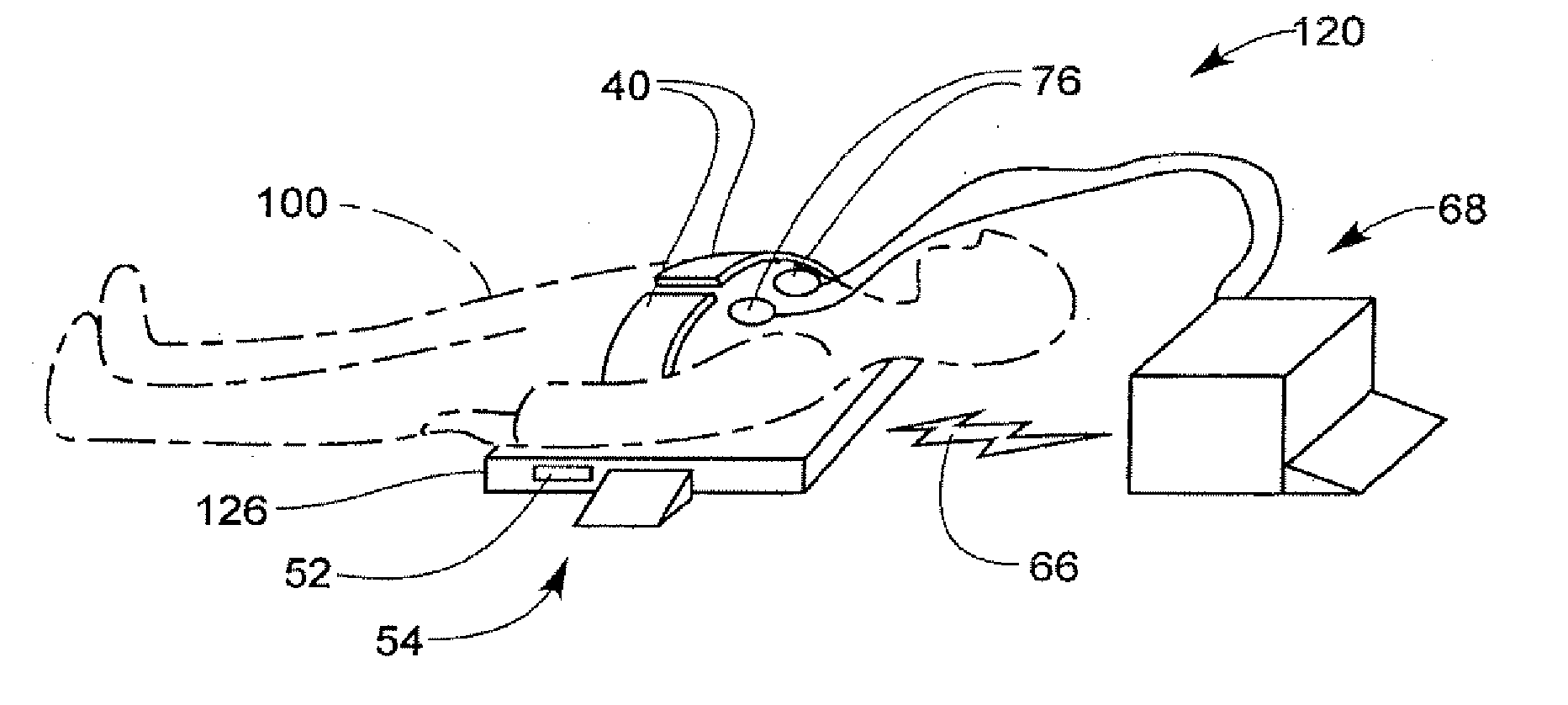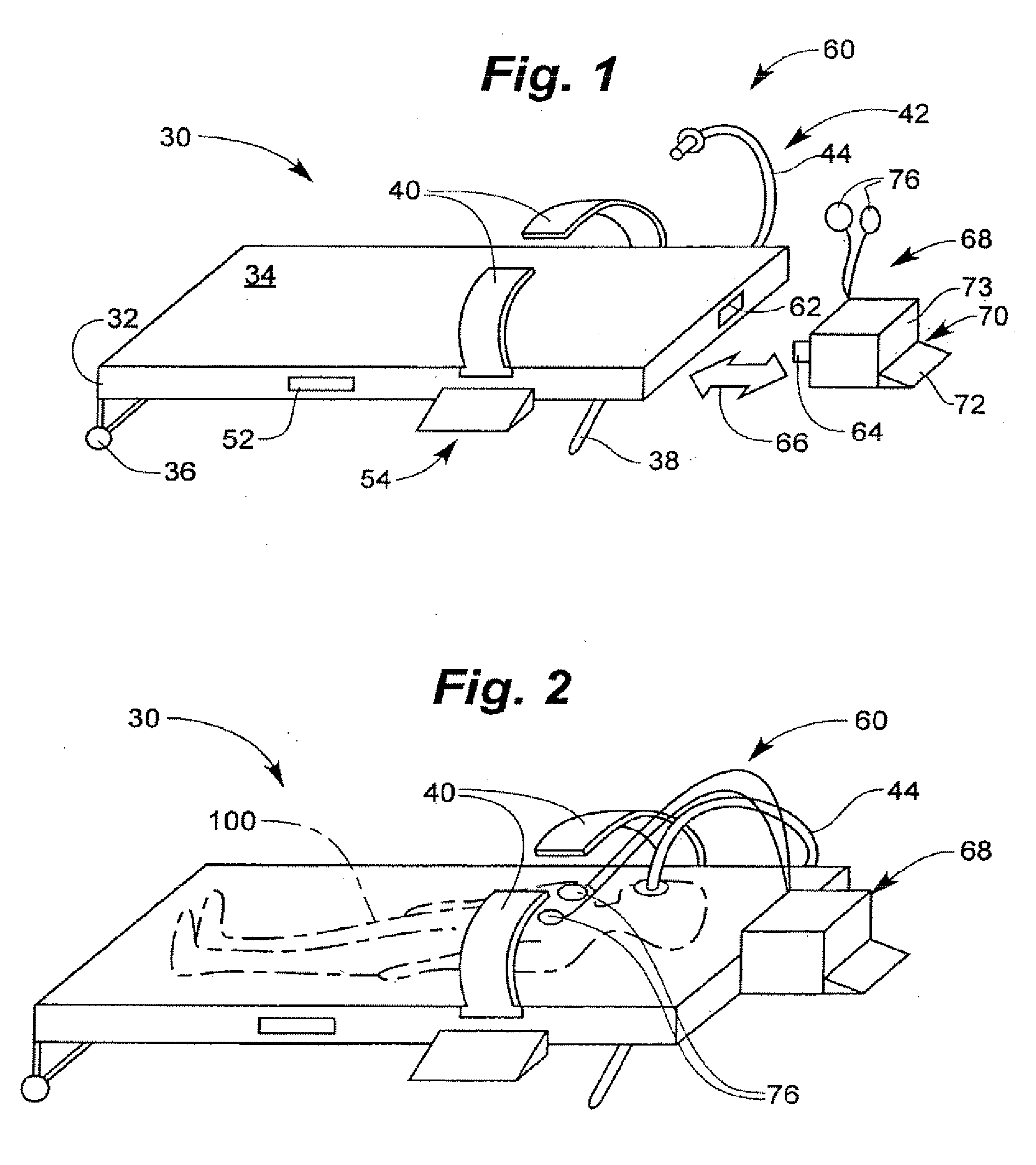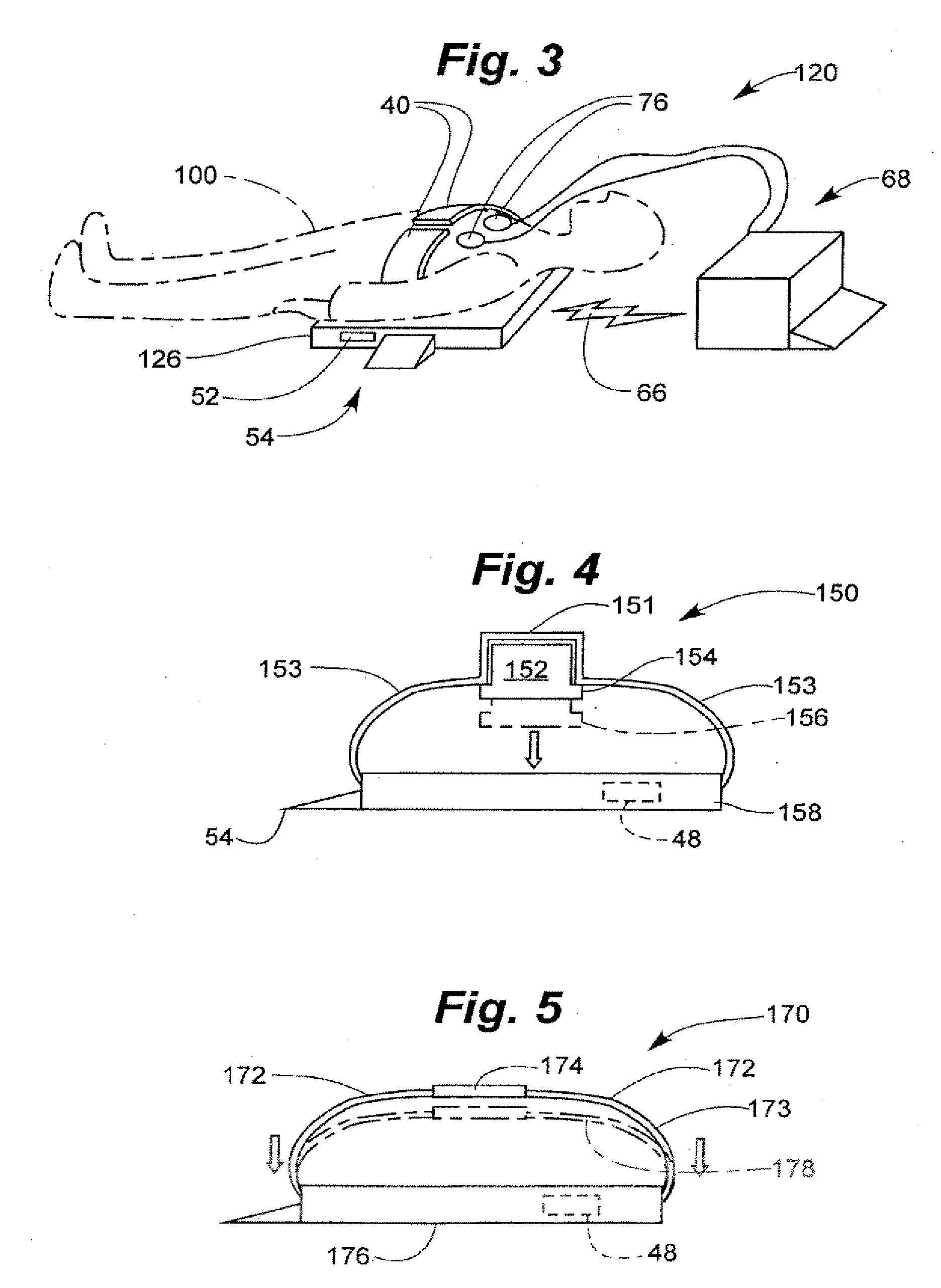Cooperating defibrillators and external chest compression devices
a technology of external chest compression and defibrillator, which is applied in the direction of artificial respiration, heart stimulation, therapy, etc., can solve the problems of synchronizing the functions of the two functions, and affecting the effect of cardiac and/or respiratory arres
- Summary
- Abstract
- Description
- Claims
- Application Information
AI Technical Summary
Benefits of technology
Problems solved by technology
Method used
Image
Examples
Embodiment Construction
[0047] According to the invention, an external chest compression (ECC) device is provided, and also an external defibrillator. In addition, each has an interface for communicating with the other, and optionally also for cooperating for maximum effect. The interfaces are made compatible with each other, as further described below.
[0048] An important aspect of the invention is that the external defibrillator is capable of functioning autonomously, independently of the external chest compression device when they are not communicating or cooperating. It is also highly preferable that the external chest compression device be capable of functioning autonomously, independently of the external defibrillator when they are not communicating or cooperating.
[0049]FIG. 1 illustrates a system 60 for performing coordinated ECC and defibrillation including an external chest compression (ECC) device 30 and an external defibrillation device 68. ECC device 30 includes a backboard or back frame 32, c...
PUM
 Login to View More
Login to View More Abstract
Description
Claims
Application Information
 Login to View More
Login to View More - R&D
- Intellectual Property
- Life Sciences
- Materials
- Tech Scout
- Unparalleled Data Quality
- Higher Quality Content
- 60% Fewer Hallucinations
Browse by: Latest US Patents, China's latest patents, Technical Efficacy Thesaurus, Application Domain, Technology Topic, Popular Technical Reports.
© 2025 PatSnap. All rights reserved.Legal|Privacy policy|Modern Slavery Act Transparency Statement|Sitemap|About US| Contact US: help@patsnap.com



